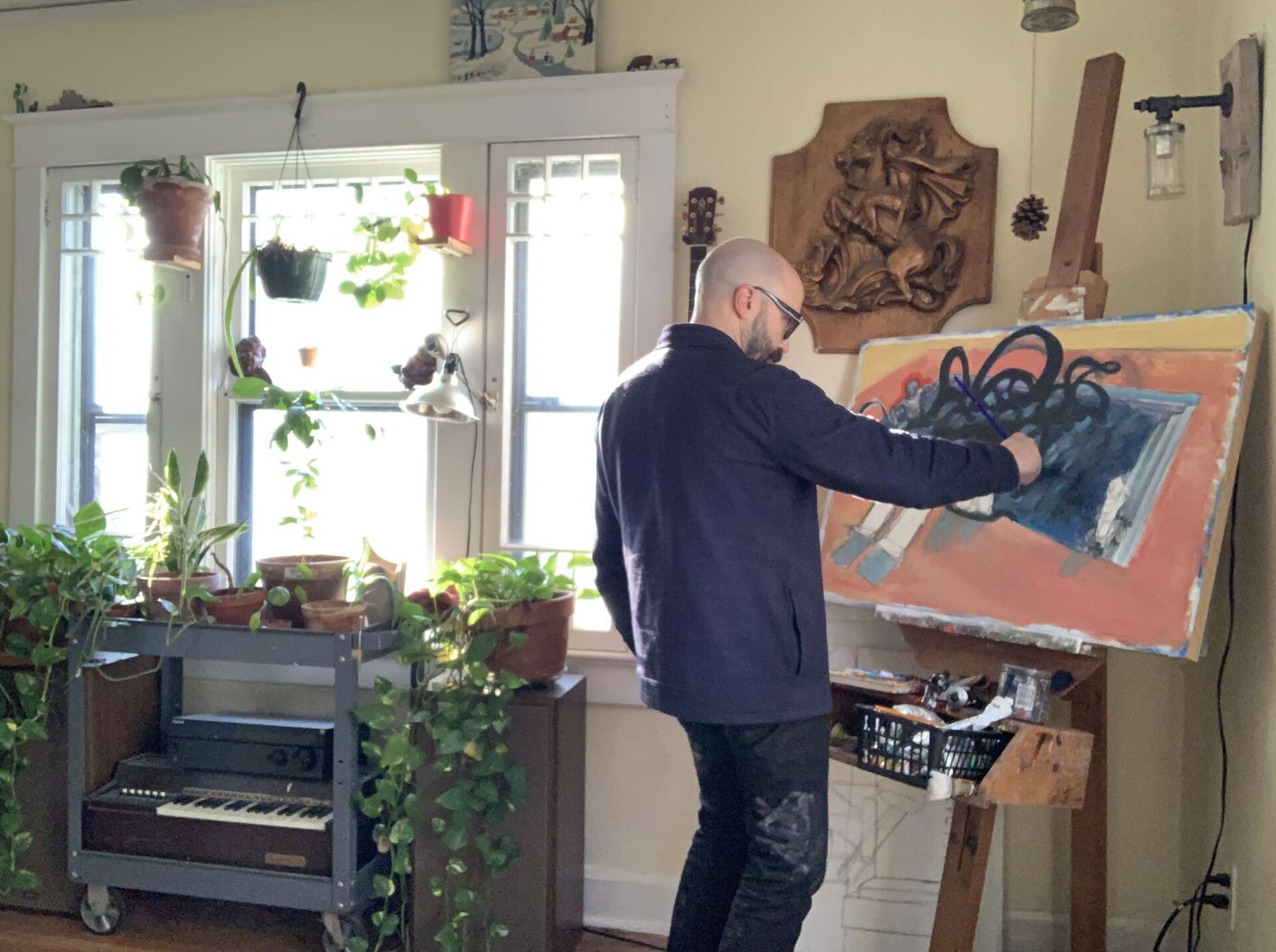We’re excited to introduce you to the always interesting and insightful Gregory Kolsto. We hope you’ll enjoy our conversation with Gregory below.
Gregory , thanks for taking the time to share your stories with us today Do you wish you had started sooner?
I don’t know that I ever officially started a creative career. It has always just been part of how I worked. I thought I abandoned it for a career in coffee. After I dropped out of art school, I worked for Starbucks in a retail capacity, then apprenticed at a small coffee roaster that was acquired by Krispy Kreme Doughnuts in 2001. I learned bigger business and got to travel through hemispheres buying coffee. All the while, my meeting notebooks were covered in portraits of coworkers. I painted and made music after work. Creativity was not being explicitly being artistically employed between 8am and 5pm. In hindsight, I do think telling the story of coffee in its many forms and faces is creative work.
That said, the real marriage of artwork and commerce occurred in late 2008 when I founded a coffee company in Kansas City, MO. I bought a small coffee roaster to roast and deliver bags of coffee with hand-drawn images on them. That quickly transitioned into following curiosity about letterpress printing. It seemed a perfect way to duplicate my line drawings into printed forms on a physical product. 14 years later, the artwork on coffee bags is still going strong. We use a lovely old cast iron letterpress printer to print our coffee packaging. From brain to bag, the images flow.
Considering all that, the pieces fit where they fit. And here I am. And here we are. I would go back and change the way I viewed the value of myself and my creativity. A more healthy narrative about those things may have proven catalytic for moving to a creative career sooner. But again, here we are.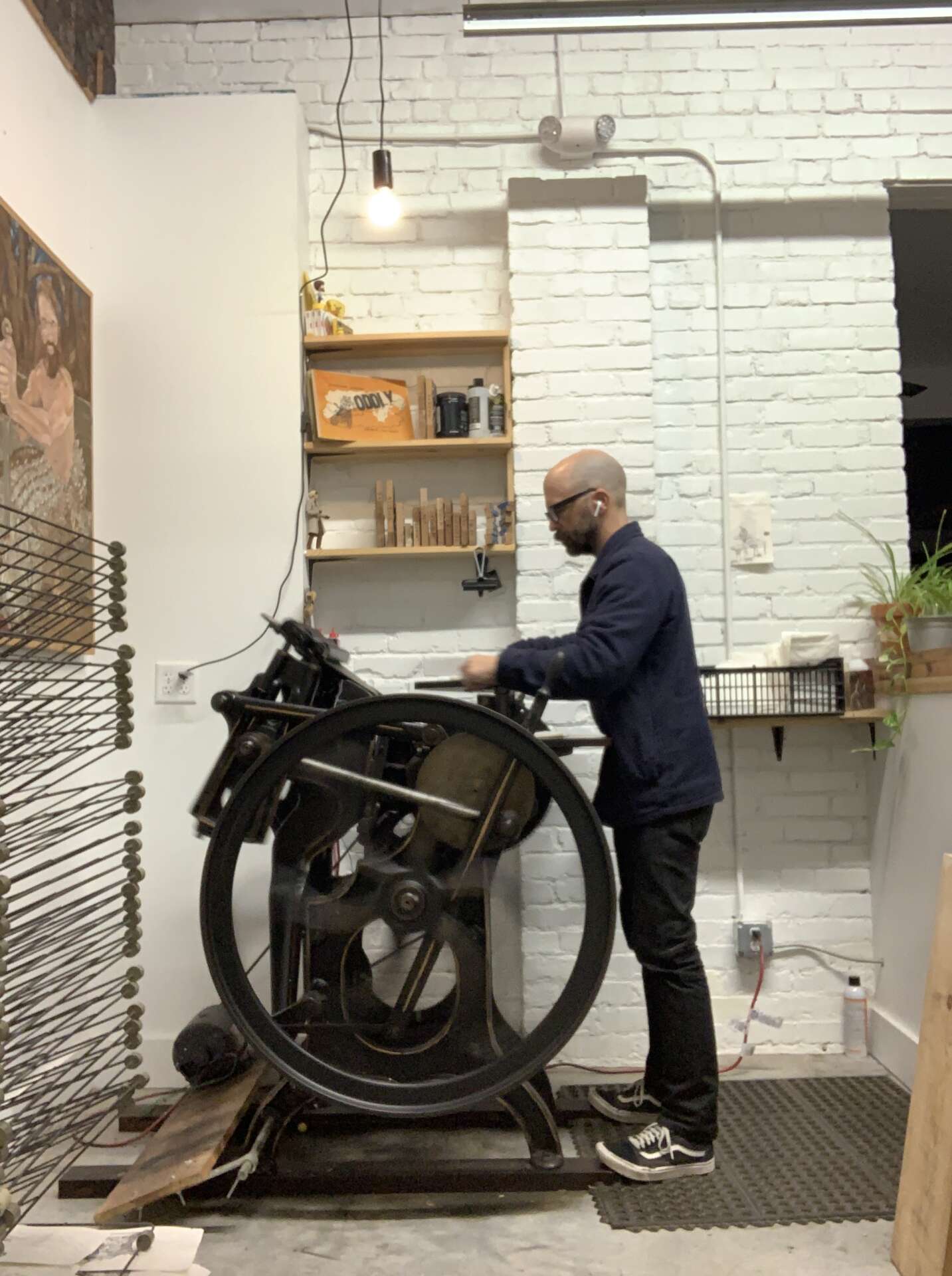
Gregory , before we move on to more of these sorts of questions, can you take some time to bring our readers up to speed on you and what you do?
I have always been a creative person. Visual art and music has always been part of my life. I didn’t really have any models for what a career in a creative industry might look like. Growing up, I knew one hobbyist painter who lived in our neighborhood. I did really well in art classes in school, but completely lacked a vision or a plan for my life. My creativity followed me around like some benevolent demon with a lot of patience.
I stumbled into coffee in 1995. Frappuccinos were just being introduced to the market. I made a lot of them. While I blended drinks and pulled shots of espresso, I was drawing with coworkers on shift, and making music after work. I learned all I thought I could from corporate coffee in a retail setting and took an apprenticeship with another small company to learn how to roast coffee. Little did I know, I’d be in a soft factory setting for the next 2o+ years. I learned a lot about small business during my apprenticeship. Through the next venture, I moved to North Carolina and began to learn where coffee came from as a crop and a commodity. Drawings in the margins of meeting notes and music sessions after work continued with no real hope of creative synthesis.
After a short couple of years with another company in Kansas City, MO., I drew up a business plan on the back of a shower curtain in 2008. That curtain birthed what is now known as Oddly Correct Coffee Roasters. What started with line drawings on coffee bags morphed into a growing interest in letterpress printing. Printmaking was a perfect bridge between art and coffee.
As I mentioned, I didn’t have a plan for my life, nor did I have a plan for Oddly Correct. I threw it at a wall and it stuck. Over the years, we have learned how to plan and plot our future. Improvisation is still our main method of moving our business forward. We have a team of wonderful and talented people to help us as well.
We offer the expected trappings of a quality focused coffee shop. There is latte art on the espresso beverages. There are amazing breakfast sandwiches. There are delicious coffees brewed expertly by genuinely friendly baristas. Couching that experience is perhaps the odd bit of Oddly Correct. There are paintings, prints and sculptures telling stories around the daily coffee hustle. There are tiny baby figurines hidden in the gaps of bricks. There may be a paper mache elf sculpture with a sword in the rafters. We want a customer’s experience to unfold over time. Hopefully, with each visit, they will notice something new lurking about. We print all of our packaging in house on an old Chandler & Price letterpress printer, and we screen print all of our larger bags of coffee for wholesale coffee accounts. Mail order coffee customers get a drawing with every package delivered.
Imagine a 4×4 table with rigor and whimsy on one axis, and low brow and high quality on the other. We try to work hard and still have fun, as well as not take ourselves too seriously, while never compromising on the level of quality in our product and service.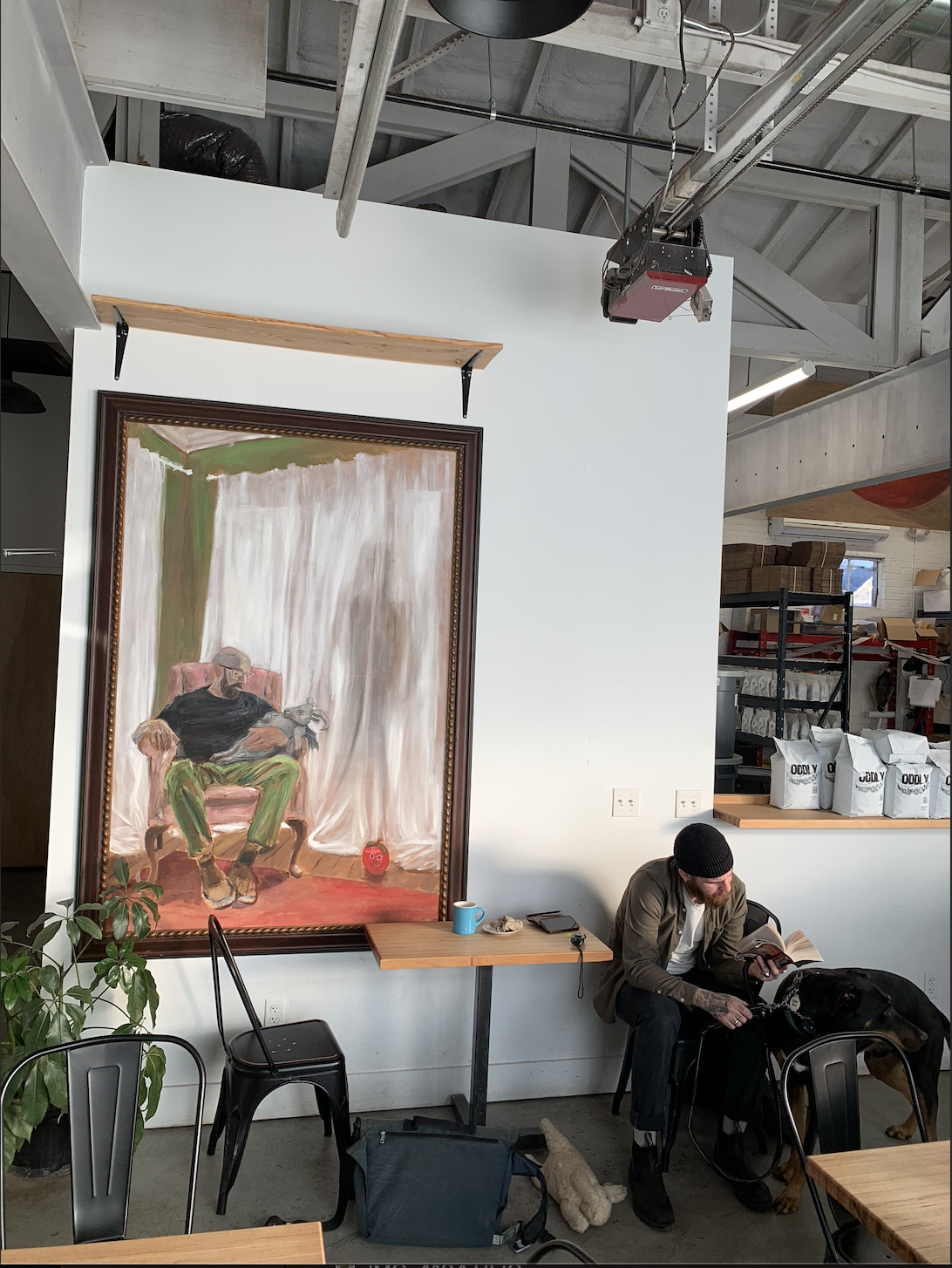
Looking back, are there any resources you wish you knew about earlier in your creative journey?
I wish I knew about Julia Cameron’s work earlier in my life. I should say I wish I had known the merit of her work earlier. I bought the book in 1992 and stubbornly put it on the shelf for about three decades. I didn’t think I could learn anything about creativity from someone who would take a headshot LIKE THAT. I was very wrong. When I finally took it off the shelf and did the work, my creative life changed. I still reference The Artist’s Way almost daily in conversation.
Steven Pressfield’s categories for Professionals vs Amateurs continue to pay dividends for my work as well. I like the idea of being a blue collar artist. You can’t catch hold of the muse if you don’t show up. Show up to the factory. Punch the clock. Do the work. Maybe you’ll get lucky.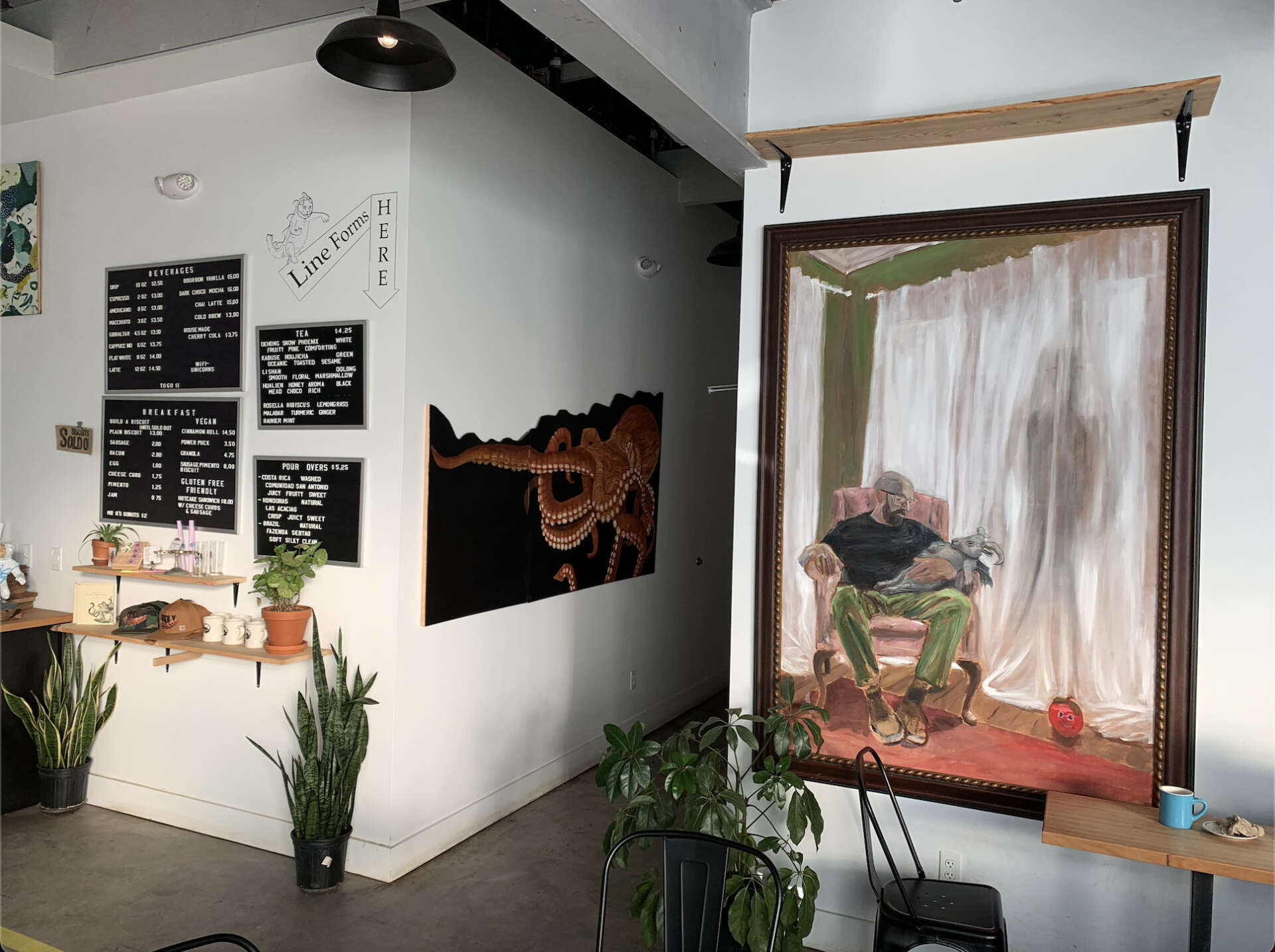
Is there something you think non-creatives will struggle to understand about your journey as a creative? Maybe you can provide some insight – you never know who might benefit from the enlightenment.
I don’t think there is such a thing as a non-creative. I think creativity is an innate human faculty. Imagination is the thing that limits a lot of folks. That’s the muscle that allows creativity to manifest.
I think folks that would not identify as creative may be missing out on the joy of just having fun and making art. It doesn’t have to be perfect to have meaning or merit. That’s where Julia Cameron’s work through the Artist’s Way is so powerful. If you do the weekly work, you will likely find something you used to enjoy doing as a child that would bring you a lot of joy as an adult. I love the concept of creative recovery. We all have creative wounds. If we go back to those moments when we found our creativity unacceptable for some reason, we can begin to offer dignity to the latent power of creativity we all possess.
Imposter syndrome is a good thing. It means you’re pushing a boundary that is there for a reason. It’s there to keep you safe. Your brain is just trying to keep you alive, not ALIVE. I feel it all the time. And I consider myself a creative person. I would also tell those folks I have felt it while doing this interview!
Anyway, life is short. Make a painting. Give it to someone safe. Or paint over it. Repeat.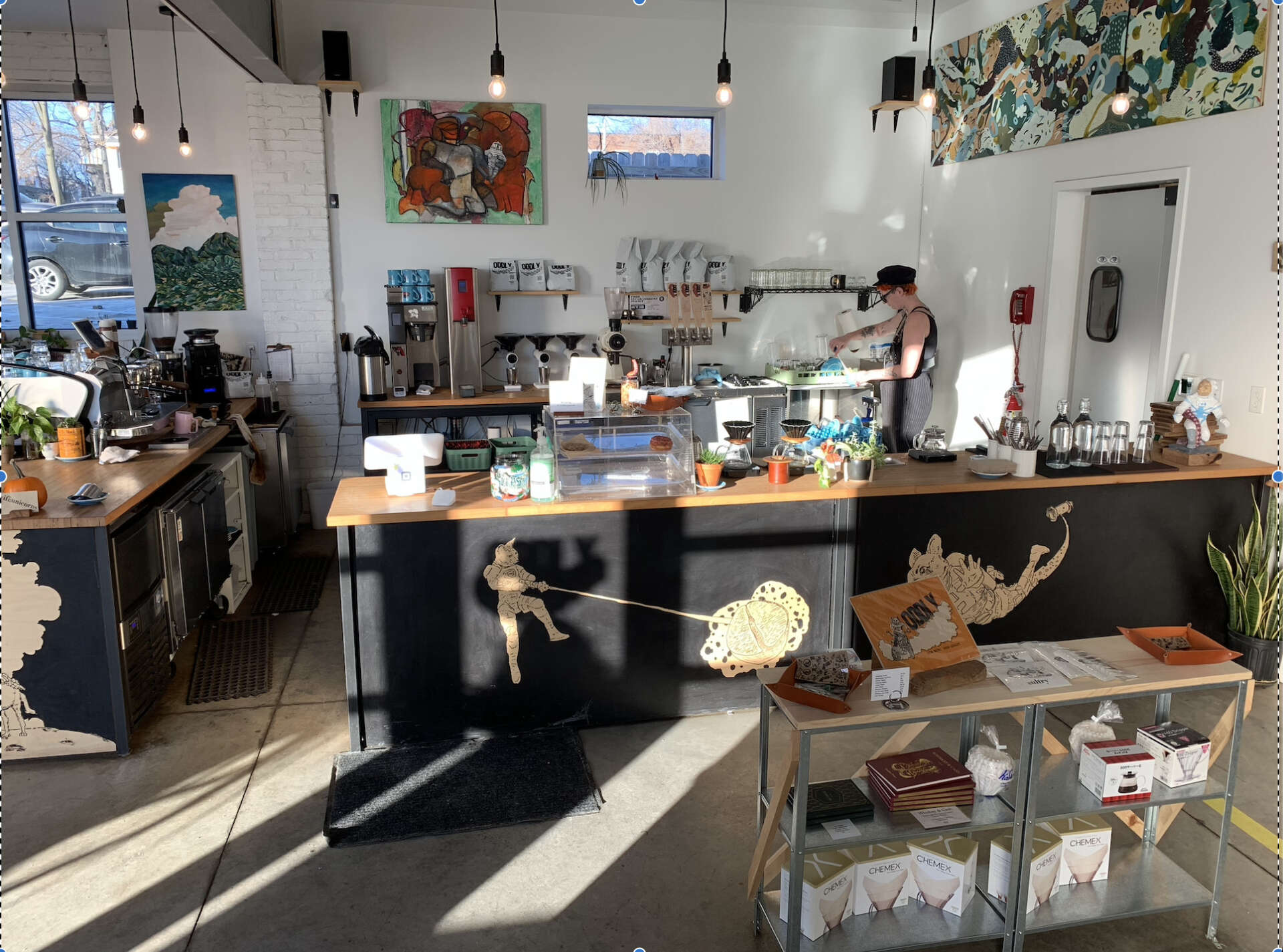
Contact Info:
- Website: www.oddlycorrect.com www.gregorykolsto.com
- Instagram: Gregory_Kolsto
Image Credits
Gregory Kolsto
Michael Schroeder


